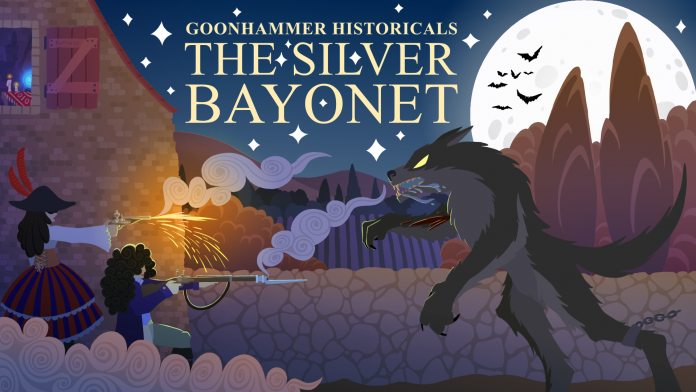So you’ve seen the movie and now you know with absolute certainty where Napoleon went wrong. You can, and will, do better. It’s time to get into real wargaming. Welcome to Napoleonics.
This article is part of our Getting Started: Napoleonics guide.

As a historical gamer I’ve been very much into American wars – the Civil War, Mexican – American War, World War 2, FIW, etc. Europe is confusing. You could wallpaper a large room with the covers of all the Napoleonic rulesets ever made. I love Sharp Practice, of course, but haven’t touched it for Napoleonic yet just because I’ve been doing so many other engagements with it. I have recently found a great way to dip my toes in – a small warband skirmish game. Enter The Silver Bayonet.

“Weird war” or fantasy historical stuff and I have never had a relationship before. When I saw stuff like Abraham Lincoln Steampunk Dreadnought, I just thought – why not just play a real historical game instead? I have limited time and I really want to focus on the stuff that interests me most. I passed off Weird War stuff as historicals for people who weren’t really interested in the period.
As I’ve developed a massive interest in horror stuff – movies, comic books, novels, tv shows, etc. I’ve come to really appreciate the idea of playing a game where you paint historical models and have them also played with some weird freaks like demons, goblins, zombies, etc. You get to research the uniforms and engagements but also add in some horror elements. I’m fully on board the train now. I’m not the engineer, but I’m shoveling coal.

The Silver Bayonet is a gothic horror game – you paint up a unit of specialists who have come together to form units called Silver Bayonets – to fight off vampires, zombies, ghouls, ghosts, etc. It’s very much grounded in the Napoleonic Wars while still allowing room for the horror stuff. It’s X-Files for grogs.
There is a Big Bad in the background – The Harvestmen – spirits and demons who feed off all of the pain, loss, and suffering of the Napoleonic Wars. They use the power from all this feeding to then manifest the horror creatures in the world. While I’m sure 1800s Europe & Canada were very superstitious places, most people don’t actually believe in the Harvestmen at the time. Some higher ups in the leadership of each country have learned of them and have put together the Silver Bayonet units to go in and gather as much knowledge and sacred equipment as they can so their country can gain the upper hand in the fight against the Harvestmen.
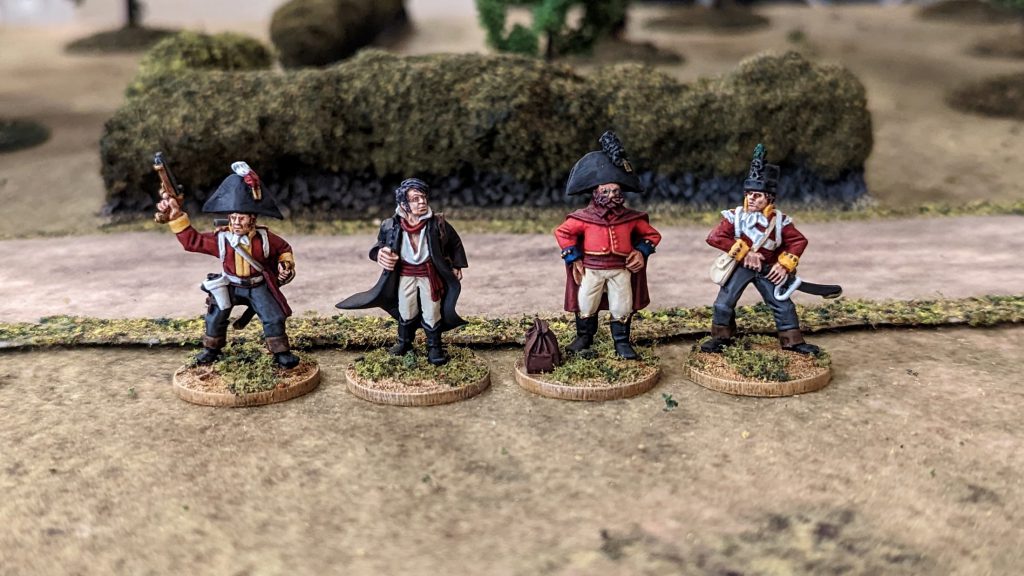
North Star Miniatures has produced unit packs for each country with eight minis in them. There are packs for:
- British (2 units)
- French (2 units)
- Spanish
- Russia (2 units)
- Austria (2 units)
- Prussia
- Upper Canada
- Lower Canada
- United States
- Trading Company
Of course you don’t need to purchase their minis, but they’re very characterful and styled perfectly for each specialist you can use in your unit. You could definitely purchase plastic Perry minis or supplement in other manufacturers as you wish.
Currently there are three rulebooks released for The Silver Bayonet with at least one more on the way. The main rulebook (released in late 2021) clocks in at 160 pages with all the rules you need to play, a bestiary, unit listings, lore, etc. The Carpathians supplement (2023) is around 60 pages and takes the setting to the Carpathian mountains (naturally) where players will fight a campaign centered around Castle Fier, ruled by an undead warlord. The newest supplement, Canada (late 2023), is obviously set in the land of denim and flannel and adds a Native American spirit twist to the enemies the Harvestmen summon. In the future there will be an Egypt supplement that will definitely be ripe for a ton of cool enemies.
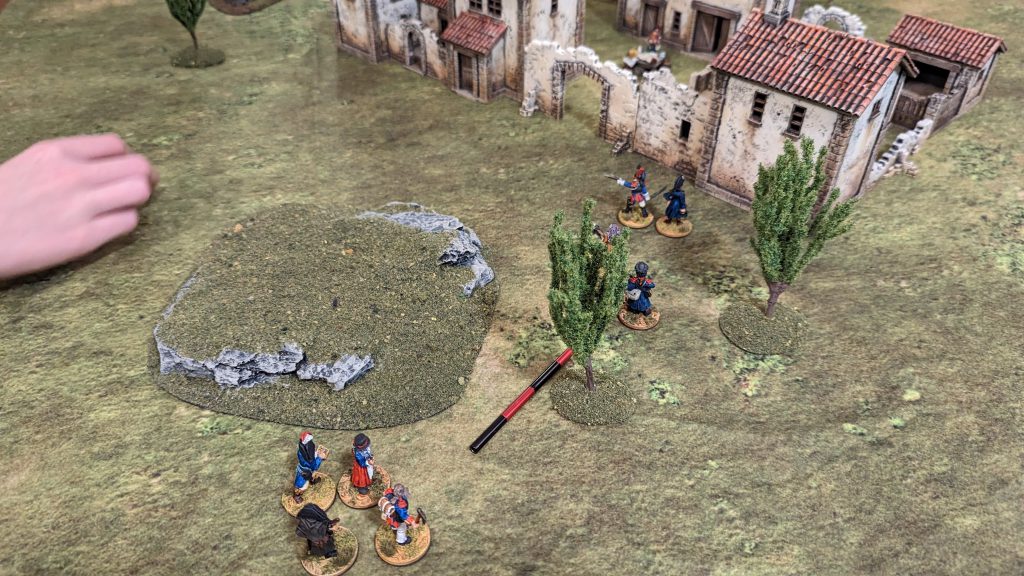
Support & Community
The great news is that this is an Osprey rulebook, written by well-liked and prolific author
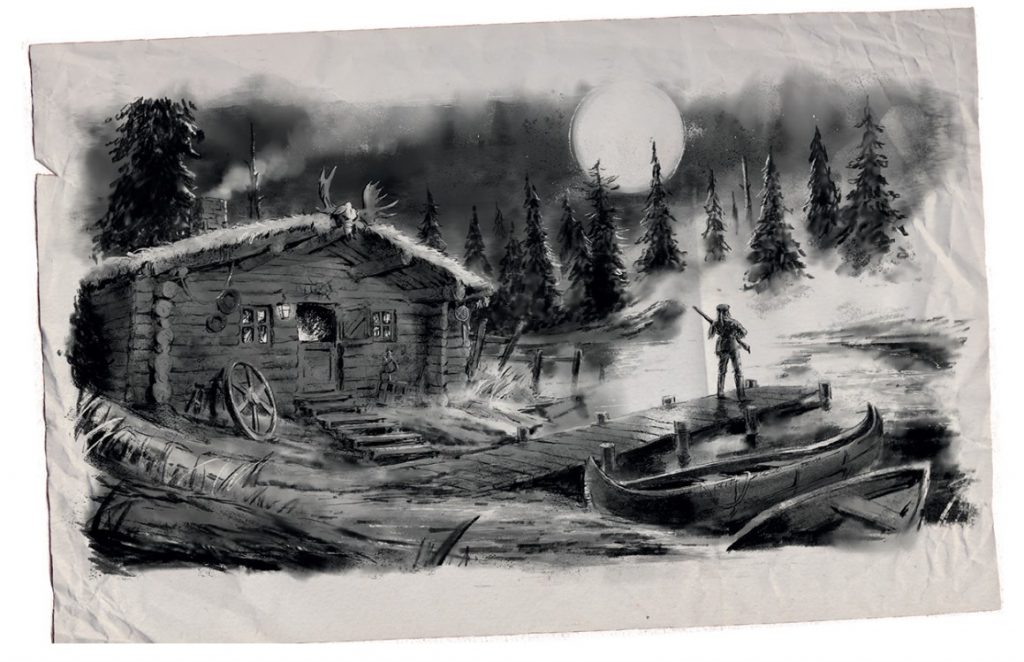
Presentation
There are 30+ wargames in the Osprey Wargames series. While I definitely bow down to any writer / wargamer that gets a game published and works their tail off to do so, there is sometimes a quality deficit. The Silver Bayonet and the expansions are presented differently, with their own style (not the ‘blue book’ Osprey style) – more like a forbidden tome. It’s got a lot of lovely black and white art with various monsters and Silver Bayonet members fighting them.

It would help new players a ton if they had some color plates showing each country’s main infantry colors – similar to the old GW space marine color plates. I think Silver Bayonet is a great game for people new to the hobby or historicals and helping them get further into it by providing uniform info is essential.
In the Canada supplement, Ash Barker (of Guerrilla Miniature Games) includes a Land Acknowledgement that is effective at showing where much of the source material comes from. It’s good to see this kind of thing being normalized in a wargaming book.

World-Building
There isn’t a ton of world-building that has to be done here. It’s set in the Napoleonic Wars, a period that already has a ton of work already written about it. Most of the enemies are gothic horror mainstays. The one page intro that gives you all the information about the Harvestmen is perfect. For The Carpathians and Canada, there is more information explaining some of the more esoteric beasts and spirits that you fight, which is great.
Each unit entry has a paragraph description for each soldier, giving you an idea of what a Supernatural Investigator or Dhampir or Occultist does in the world. Scenarios help build on the theme, but are not incredibly detailed – there aren’t a lot of extra pages in Osprey books for stuff like that. I think what has been provided is plenty.
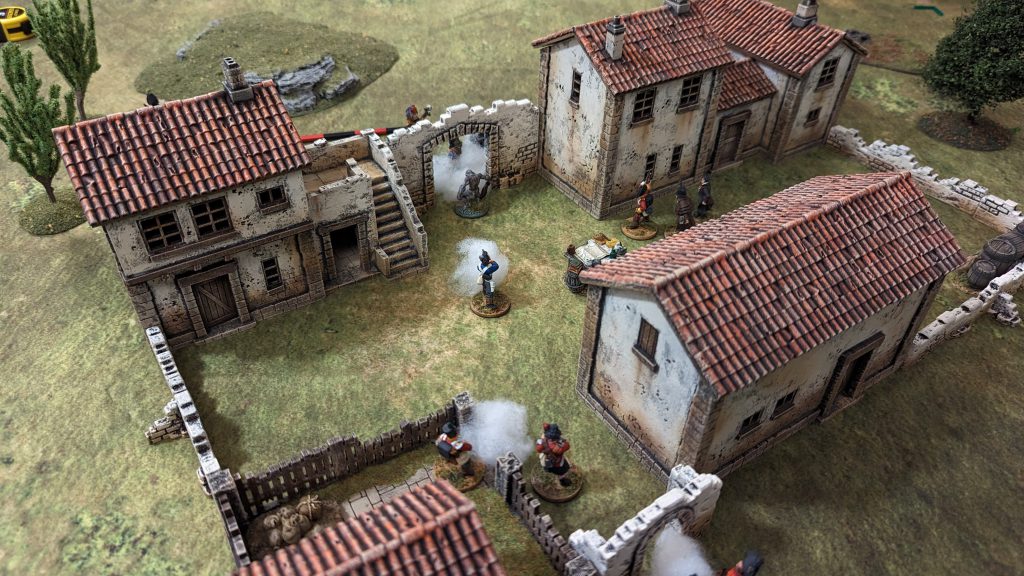
Organization
The author has had quite a few rulebooks under his belt by now so the organization is pretty well standard. Intro, What Are Dice, etc. Then it gets into how you create your unit, which is maybe the most important part and why we’re all here. It lists each nation your Silver Bayonet unit can fight for, then you create your officer (here is where it details all the stats each soldier has and what they do).
When you create your officer, you can choose three changes to the officer – make them better at melee or shooting, faster movement or tougher, or more courageous or better at recruiting. This gives each officer a little bit of flavor and helps differentiate players’ forces. After we create the officer’s stats, we then choose their equipment – they can have six pieces of equipment – two from the Special Armoury and up to four more from the General Armoury.
General Armoury equipment is very much what you’d expect – pistols, muskets, rifles, swords, etc. You do have to take ammunition pouches for some weapons, so those take up a slot. As far as I can tell, everything in the Special Armoury is related to weaknesses of enemy monsters. Silver weapons vs werewolves, cold iron vs goblins, holy symbols vs vampires etc. When you create your unit you must bring along a little of each type of special weapon so if you go up against one of these creatures you won’t be floundering.
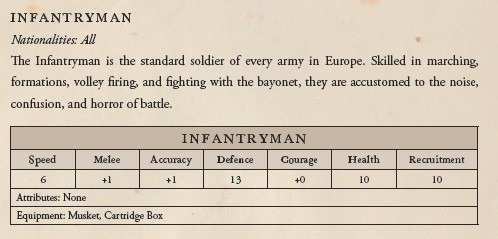
Each officer has 100 (or 105 if you choose that upgrade) points to choose soldiers to fight with. The rules limit you to seven soldiers plus an officer (the North Star warband packs come with eight minis, conveniently) and recommend you always start with this number. Each soldier can then choose one (sometimes two depending on specialty) piece of equipment from the Special Armoury. In the main rulebook there are 24 soldiers ranging from an Infantryman to a Werebear. The Carpathians adds three more and Canada adds three more for a total of 30 soldiers you can choose from.
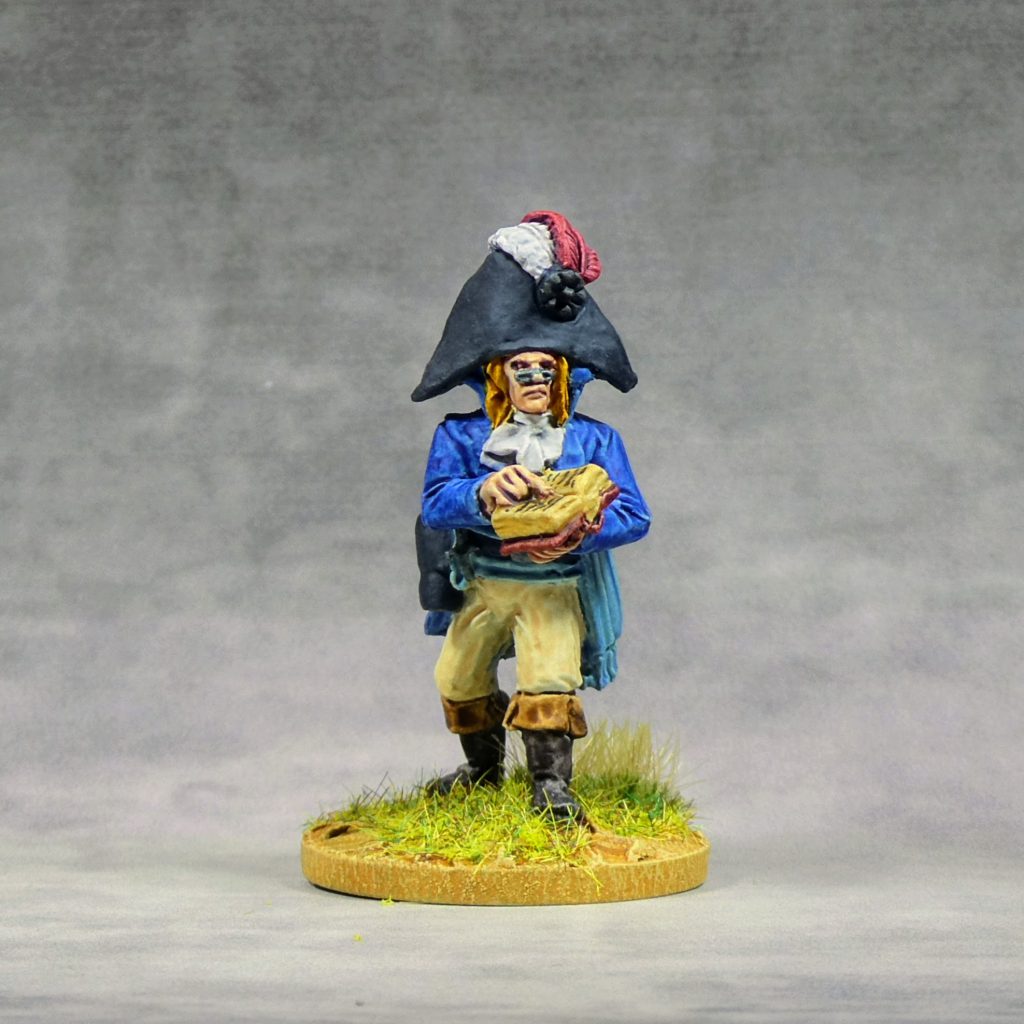
After you learn how to create your unit, you can then learn the mechanics of the game. Overall I think it’s well laid out, however some instances of a keyword or rules interaction sometimes isn’t fully explained when it is first introduced – it is explained later when another rule is mentioned. This can be a bit annoying when you’re looking through a physical book and don’t have a CTRL-F feature.
The campaign is great – and it’s why we’re here. The campaign is very much a Napoleonic Necromunda (lite). The usual steps of injury, experience, gain skills, re-equip, etc are here. Compared to Necromunda or Mordheim it is much less in-depth – there are only five injuries, for instance. I think it works in that case. What I would love to see is a more in-depth experience chart. There are only nine advances available to each warband member and some of them aren’t a choice – like +1 Courage might be the only option. I could see players building out more homebrew stuff for this kind of thing.
There are ten scenarios, almost double the usual six you get from most rulebooks. The scenarios are more specific for this game – specific clues, specific terrain, specific monsters. Luckily, the author has included a section on how to create your own scenarios which should definitely help players go beyond the standard ten.

The author included 14 pages detailing how to play the game Solo, a great and maybe mandatory? addition to the game in 2023. The game works really well solo or coop since the monsters are run by what amounts to an AI. To round out the book there are 12 pages of bestiary, detailing all of the monsters and weirdoes you’ll encounter in the wilds of the Napoleonic world. I like the layout here, I just wish there were more images of some of the more obscure monsters so you could get an idea of what they should look like. The last part of the book holds all of the skills that you’ll use. This is great because you can just thumb to the back to find skills when you need to look one up.
There is no index, which is a huge bummer – every wargame book should have an index.
Design & Mechanics
A typical game of Silver Bayonet has two opposing warbands (7 or 8 minis) meeting at a 2.5′ x 2.5′ or 3′ x 3′ board. There are usually between 3-5 clues on the board (usually represented by a token or scenic base) that can be investigated by using an action and sometimes monsters start on the board. You then draw a random card and the scenario tells you what happens – a monster spawns, your fighter has seen something terrible and has to take a terror check, or they might find the scenario objective.
The game has a simple dice mechanic – it uses d10s – blue dice are Power dice, red dice are Skill dice, and black dice are Monster dice. To make a check, be it for shooting, melee, terror, or something else, you roll a Power and Skill die and add them together, comparing vs a target number (TN) or the enemy’s defense stat.
As an example, Gauthier (a French grenadier) has discovered the mutilated corpse of a local clergyman behind a dung heap in the barn of a great farm house. The eyes have been cut out and his heart has been eaten. Gauthier has to take a terror check (-3) or suffer a result from the Terror Check Table. In this instance, the -3 subtracts 3 from his courage stat of 2 so his overall check is done at -1. He rolls an eight net, and receives the result.
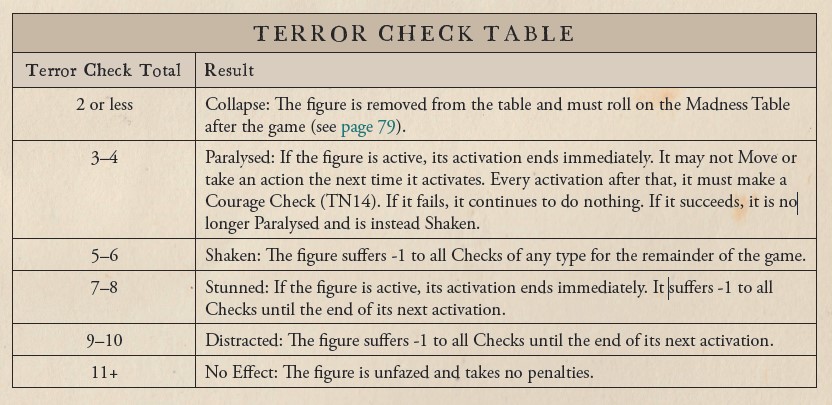
A few turns later, Gauthier cracks a shot with his musket at a revenant redcoat who is eating the remains of a local accountant. The revenant has a defense of 12, which is amongst the lowest in the game. Gauthier has Accuracy +2, which is high. He rolls 10 on the two dice and adds the +2 to get a hit vs the 12. He rolled an 8 on the power die and a 2 on the skill die. Muskets use the Power Die to inflict damage, so the Revenant would take 8 damage (minus four because they’re resistant to ranged damage). Rifles and fencing weapons (and other more finesse-y weapons) use the Skill Die to do damage. Most fighters have 10-12 health so usually survive more than one hit.
In addition to making these checks, you also start with a Fate Pool each game of two Power die, two Skill die, and one Monster die. You can use the Power and Skill die for re-rolls and use the Monster die for affecting how the Monsters work each turn (rerolling attacks, negating damage, and even choosing a different target for their attacks). For me, I’ve used a bunch of muskets, pistols, or hand weapons and they use Power Die – so holding them back to re-roll damage results has been pretty important. I use the Skill Die to re-roll to try to get a hit or Negate Damage – you can roll a die from your pool and negate half of that die’s value in damage to one of your figures. Overall the dice mechanics work well. I like the resource mechanic – it’s not just roll and hope for the best.

After you shoot, you have to reload as an action. After being shot at, you can choose to dive for cover (Move 2″ in any direction) or Return Fire (immediately make a shot if loaded). After you fight in close combat, your opponent gets a chance to do so if they like (or retreat) and both minis get a Fatigue marker. Fatigue makes it harder for that mini to hit this turn as well as makes it easier for them to be hit (by one for each fatigue).
Movement is basically what I would call standard, with a movement stat and all the penalties etc. due to terrain. To get into combat you just move into base to base with an enemy model. This means you can shoot then move into combat and do a close combat all in one turn.
The Monster AI works in a very easy way – you check if they can shoot, if they can’t, then they move either toward the closest enemy in LOS or toward the closest Clue marker. If they move into contact with an enemy they will do a Close Combat attack.
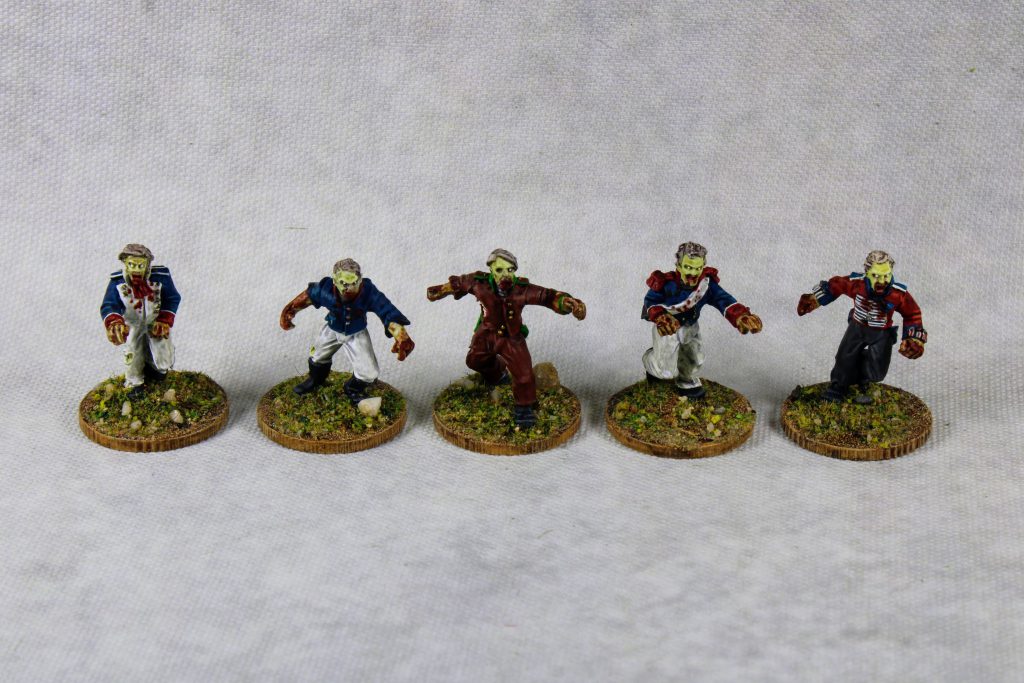
The ten scenarios included are relatively specific with regards to terrain and monster minis required; I think most gamers can either pick up the minis needed, have them 3D printed, use tokens, or substitute in another mini for that specific monster if they wish. Similarly, I think the terrain can be changed to suit your collection if needed. The most important thing is the story.
Most games of Silver Bayonet are going to be one warband vs another warband with monsters in the middle. You want to be the warband to take out the monsters and find the clues, and you get bonus points for killing the other warband. It is entirely possible to do only co-op, though.
After each game your fighters will receive experience – usually one or two experience per fighter. Advances come at experience levels of 5, 10, 18, 30, 45, 65, 100, 150, and 200. It does take a few games to get to something you might really want (like +1 health, +5 recruitment, etc). You’re not going to get to +1 Accuracy (shooting) until probably your 9th or 10th game at the earliest. You have a 1/10 chance of your fighter dying after a game if they were taken out of action, but this can be re-rolled if you had Fate Dice left after the game. You can always recruit up to your officer’s recruitment stat – so if someone dies, you can replace them.
I do think you’re going to want tokens or trackers of some sort for this game. Likely tokens you’ll want: unloaded, fatigue, activated, damage, and maybe a minus to hit marker from terror. Some figures can bless other guys by casting spells or blessings, so you might want tokens for those. I like using tokens, because I like the game showing all the information on the board and not forgetting stuff, so I have no problem with this.
Playtest
I played six games of Silver Bayonet using the basic French and Spanish warbands from North Star. At first I was a little peeved – it seemed with enemies largely having defense of 13 and 14, and my guys having +1 accuracy or melee (some rarely having +2), it would be very difficult to hit anything. There is no aim or bonus to shooting in the game, so you can’t tip your results like that. I did find that after playing it wasn’t as bad as I thought. You can re-roll – usually if you have one die that is high, you can re-roll the other to confirm a hit. Or you can engage in close combat, fatigue the enemy, then shoot them with their lower defense.
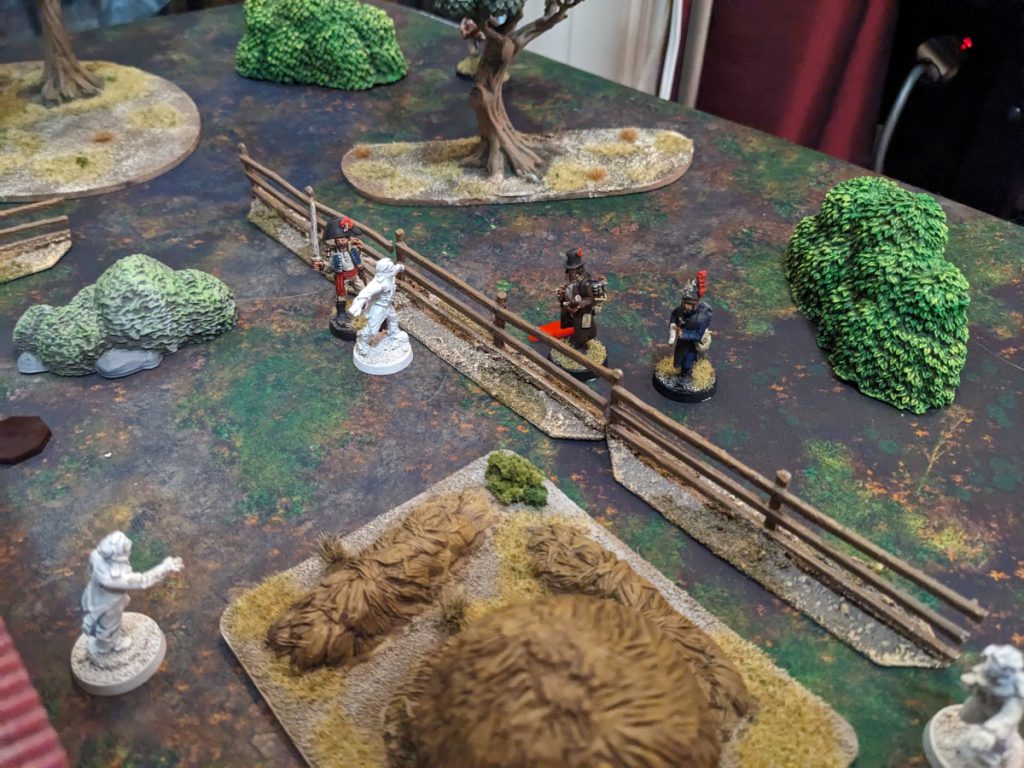
The enemy monsters definitely play a large part of each battle. Usually you have to kill them to win, or they hang out near the Clues and you have to go through them to get what you need. I’ve mostly been fighting goblins, hobgoblins, revenants, and bandits, so I haven’t come up against a big bad yet, but I look forward to it.
Experience is slow but that might be good – if you get a band of seasoned killers going quickly it could make a campaign very painful for other players. After battle damage is not super punishing. It’s possible to just drop a soldier you don’t like and grab another after a game – this is a cool way to try out new models. The differences between each type of soldier are not massive – its not like a space marine vs a guardsman or a Sherman tank vs a Panther II, but they do have subtle differences that work in the universe and make them worth taking for various jobs.
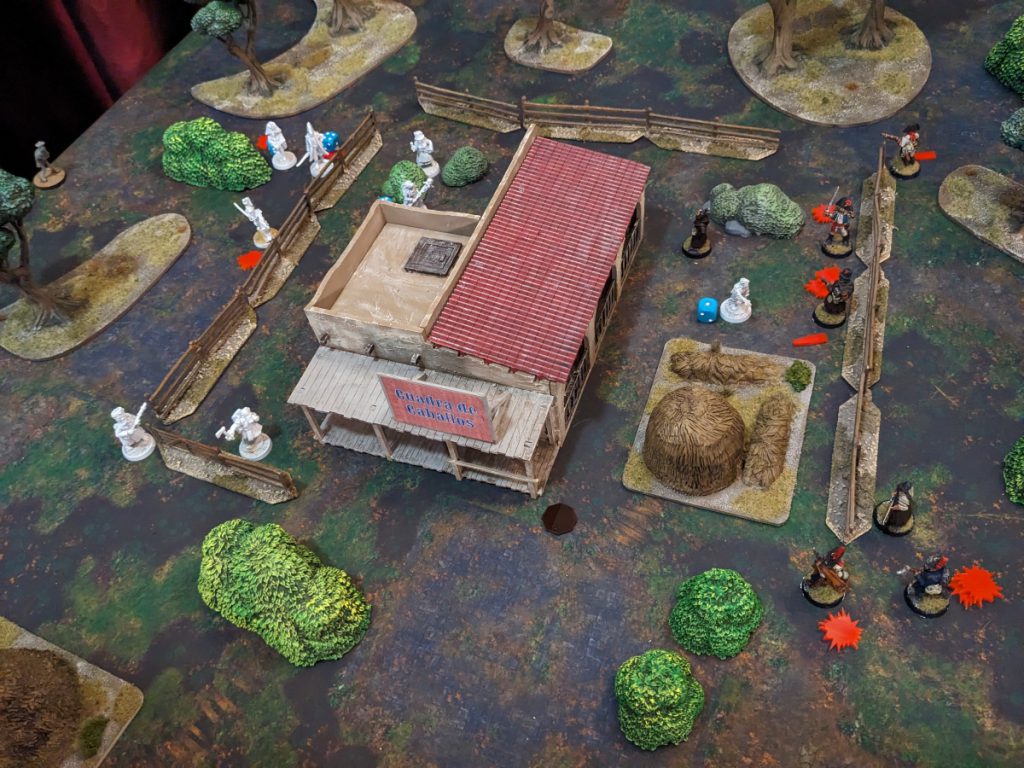
After playing a few scenarios you’ll figure out which equipment is needed and which might be superficial. You definitely want one or two of each special damage type in your unit otherwise you’ll run up against a monster that is immune to stuff and be in a really bad situation.
Final Thoughts
I have been very pleasantly surprised by this game (and the minis line). I shouldn’t be, at all, since it has sold extremely well and all of Joe McCullough’s work has been very well received before, but like I stated at the beginning of the article – I was very jaded about ‘weird war’ stuff. I think I’ve had an epiphany – I enjoy weird war stuff when the units you use are entirely or mostly entirely historical. I don’t think I want Robot Samurai George Washington vs Gundam Cornwallis, or Kaiju Patton vs Spaceship Rommel. I enjoy painting the real uniforms and using real terrain and having horror elements involved.
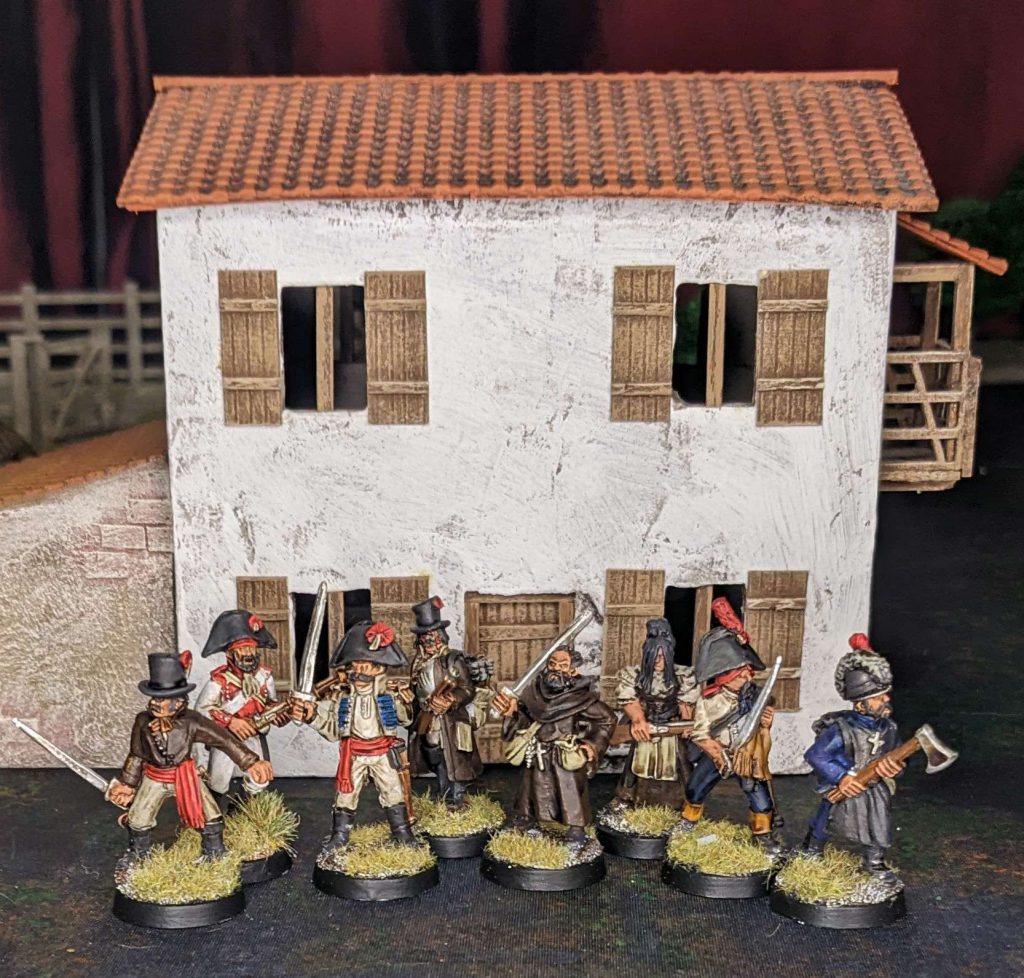
The minis from North Star are extremely characterful and well worth purchasing, even just for other games where you’re using Napoleonic stuff. While I’m extremely intimidated to research and paint Napoleonic guys, figuring it out is a challenge that is part of the hobby. I would love if they or someone produced a set of tokens and cards to use for the game specifically – I enjoy that kind of stuff and in the back of my mind I always want to be prepared.
Overall I think the background and story for the game is very well thought out and expanded upon, and the rules are solid. I think this game really could be the Necromunda or Mordheim for historical games – a game you play with a warband for a year or two with your pards, following the intimate history of your guys and seeing which ones rise above and which ones get torn apart by vampires. While I think the campaign stuff could be fleshed out just a bit more, I think most gaming groups who are experienced could write that for themselves.
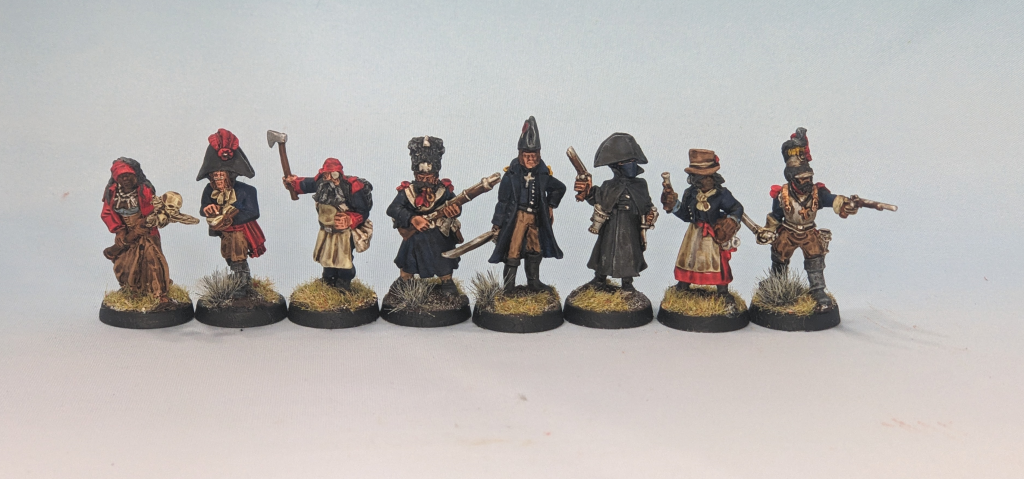
The Silver Bayonet has been a joy to get into and play – I think you’ll like it too, especially if you’re just starting with historicals or even just starting with Napoleonics.
Questions? Comments? Send it to contact@goonhammer.com. Thanks for reading!
